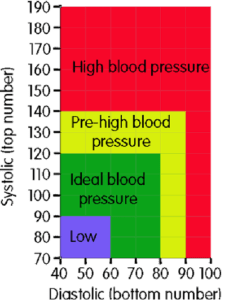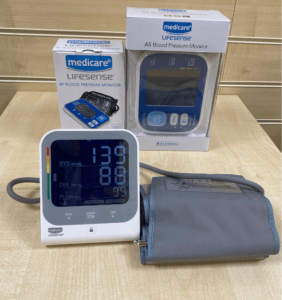Home Blood Pressure Checks
Home Blood Pressure Monitoring
During the pandemic, many people have turned to home monitoring to keep an eye on their blood pressure, this article looks at the benefits of home monitoring and gives tips on how to improve the reliability of your results and understand what the measurements mean
Home blood pressure monitors come in a range of designs to suit all needs but generally consist of a monitor and detachable cuff.
Why Monitor your Blood Pressure at Home?
High blood pressure is the second biggest risk factor of disease leading to premature death in the UK (Public Health England)
Early detection of high blood pressure can save lives, by regularly checking your blood pressure you increase your chances of noticing any changes early, this early detection can mean that a wider range of treatment options are available.
Monitoring your blood pressure at home is fast, convenient, saves a trip to your GP and when done correctly can even provide more reliable results than measurements taken at clinical settings.
If diagnosed with high blood pressure (HBP), readings taken at home can provide your GP with a better reflection of your blood pressure. These can be taken at different times of day, when at rest, after exercise or at more regular intervals and this can then be used to inform any treatment decisions with your GP.
How to Take Accurate Blood Pressure Measurements at Home
The following steps will help you to get the most accurate results from your home blood pressure monitoring:
- Take the reading at a time when you are at rest if you are feeling stressed or anxious this may affect the result.
- Sit upright, with feet planted on floor and back against the chair.
- Rest your arm on a table, ensure the arm and hand are relaxed and supported in this position, avoid clenching your fist.
- Fit the cuff over your upper arm, tighten the cuff to a point where two fingers can still be easily slipped under the cuff. Position the cuff so that cuff is on your upper arm with the tubing running down the centre, most cuffs feature a diagram to help you position them.
- Start the blood pressure reading – it is important to remain still and avoid talking while cuff is inflating.
- Record results – it is important to record the results of each measurement, keeping a pocket diary with your monitor gives you a handy place to keep these.
- Wait a few minutes and repeat the measurement, this helps you keep any eye on the accuracy of the monitor, results should be similar when tested a few minutes apart.
What do my blood pressure measurements mean?
Blood pressure readings are given in mmHg (millimetres of mercury) and are always displayed as two measurements: Systolic & diastolic.
Systolic pressure is the figure displayed on the top and this represents your blood pressure when the heart is pushing blood out.
Diastolic pressure is the figure displayed on the bottom and this represents your blood pressure in the resting phase between heart beats.
Many blood pressure monitors will simultaneously record your pulse which is the number of heart beats per minute.
How do I know if I have high blood pressure?
Blood pressure UK have produced a chart that can be downloaded and kept with your blood pressure monitor to help you interpret your readings.
In general readings fall into 4 categories:
- Low – Systolic less than 90mmHg/diastolic less than 60mmHg.
- Ideal – Systolic less than 120mmHg/ diastolic less than 80mmHg.
- Pre-high blood pressure- Systolic between 120mmHg -140mmHg/ diastolic between 80mmHg -90mmHg.
- High blood pressure – Systolic greater than 140mmHg/ diastolic greater than 90mmHg.
It is important to note that a high blood pressure reading at home is generally not used to diagnose high blood pressure, but it is a good indicator that it is time to speak to your GP to have your blood pressure investigated further.

Blood pressure chart produced by Blood Pressure UK found at http://www.bloodpressureuk.org/your-blood-pressure/understanding-your-blood-pressure/what-do-the-numbers-mean/
What can I do to reduce my blood pressure?
If you have concerns about your blood pressure it is always worthwhile discussing with your GP however there are many small changes you can make to help bring your blood pressure down; reducing your salt intake (less than 6g or a teaspoon per day), eating a balanced diet, increasing your activity level and stopping smoking (we can help!!) can all help to reduce your blood pressure.
Picking the Right Blood Pressure Monitor
Here at Right Medicine Pharmacy, we stock a range of Medicare Blood pressure monitors, these monitors provide fast, accurate results with clear to read digital screens and user-friendly instructions making them the ideal choice for home blood pressure monitoring.
Some of these monitors also have advanced features such as a memory function for up to two users to keep track of your blood pressure readings and built-in irregular heartbeat detection.
Our teams are always happy to help answer any questions you may have to help find the one that is right for you.
Even better we are currently offering 20% off the full range!


